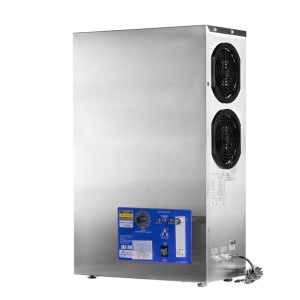Freeze drying, also known as freeze drying, is a process that removes moisture from a substance through sublimation, resulting in a dry product. It is commonly used in various industries including pharmaceuticals, food processing and research laboratories. The principle of this fascinating technology lies in the ability to freeze a substance and then apply a vacuum to remove the frozen water molecules without melting them into liquid form.
The freeze drying process includes three main stages: freezing, primary drying and secondary drying. During the freezing phase, the substance is first cooled to a low temperature, usually below its freezing point. This is achieved by placing the material in a freeze-drying chamber and applying a refrigeration system to create a controlled environment. Once the substance is frozen, it can move on to the next step.
Primary drying is the essential step in freeze-drying. This is the process of sublimation, in which frozen water molecules go directly from the solid state to the gas state without passing through the liquid phase. This is accomplished by applying a vacuum to the freeze-drying chamber, reducing the pressure and evaporating the water molecules. Keeping the temperature low during this step prevents the product from becoming damaged or deteriorating.
The final step, secondary drying, is essential to remove any bound water molecules that were not removed in the primary drying step. It is achieved by slightly increasing the temperature inside the freeze dryer chamber, which causes the remaining water molecules to evaporate. This step further guarantees the long-term stability and quality of the dried product.
The principle of freeze drying is based on the concept of preserving the original structure and properties of a substance. Unlike other drying methods such as air drying or spray drying, freeze drying minimizes damage caused by high temperatures and pressure changes. By freezing the material and removing the water through sublimation, the integrity of the product as well as its nutritional value, flavor and aroma are preserved.
The application of freeze-drying technology is expanding to various industries. In the pharmaceutical field, it is widely used to preserve biological materials, vaccines and drugs. Freeze-dried products can be easily reconstituted with water for convenient storage, transportation and subsequent use.
In the food industry, freeze-drying makes it possible to preserve perishable foods such as fruits, vegetables and even dairy products. The process preserves the natural taste and texture of foods while extending their shelf life. Additionally, freeze-dried foods are lightweight and compact, making them popular with hikers, campers, and astronauts because they allow for easy hydration.
In summary, the principle of freeze dryers is based on the process of sublimation, in which frozen water molecules are transformed directly from solid to gas under vacuum. The technology ensures that the original structure and properties of a substance are preserved, making it invaluable in industries such as pharmaceuticals and food processing. The ability of freeze drying to produce dry products with extended shelf life and minimal spoilage has made freeze drying the preferred preservation method worldwide.
Post time: Nov-15-2023



